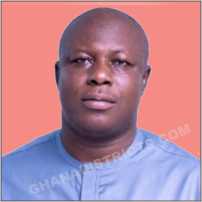

Introduction
The overall development of a country is grounded on the production of goods and services. Critical to the production process is the human capital of the country. Although all persons regardless of age and sex consume goods and services produced but merely a small section of the populace produces them. This group of working population is referred to as the employed population or the work force. The type of economic activity pursued is influenced by nature of the economy and level of socio-economic development (Hull, 2009). All things being equal, the larger the employed population, the more wealth is created leading to the improved standard of living of the general populace.
This chapter presents information on the activity status, size and structure of the labour force, and its distribution by occupation and industry. Also the employment status and employment sector of the population is analyzed. This section also looks at the economically active and economically not active population. Each of these population characteristics are analyzed by age and sex.
Economic Activity Status
The question on economic activity used for this report was asked of all persons fifteen years and older who engaged in any activity for pay (cash or kind) or profit or family gain for at least one hour during the seven days preceding census night irrespective of whether the person was attending school or not. Nevertheless, the International labour regulations stipulate 15 years as the minimum working age (ILO, 1973, Children?s Act, 1989).
Figure 4.1 shows that, of the total population 28,868 aged 15 years and older, 67.5 percent is economically active (employed and unemployed) while the economically not active population (not employed, not seeking nor available for work) constitutes 32.5 percent. Of the economically active male population, 70.5 percent of the males are economically active where as that of the females are 64.9. The table again shows that of the economically not active population, 29.5 of them are males which is slightly lower than the female of 35.1. This clearly indicates that, there are more women who are economically not active than men.
Activity status by sex
Table 4.1 shows population 15 years and older by activity status and sex. Out of the total population of 28,868, 67.5 are economically active while 32.5 are economically not active. Moreover, 97.3 percent of the economically active populations are employed while the unemployed make up 2.7 percent.
Among the employed, majority (96.3%) worked seven days preceding the census night while 3.5 percent did not work but had job to go back to. Only 0.2 percent did voluntary work without pay. Among the unemployed, majority (54.9%) are first time job seekers with 45.1 percent representing those who worked before, seeking work and are available.
Table 4.1 further shows that, students form a large proportion of the economically not active population (41.7%). From the table, it is again observed that those who are Disabled/sick, too old or young and those who did home duties (household chore) constitute 5.2, 18.9 and 21.4 percent of the economically not active population. In addition to this, 1.5 percent of the economically not active population is pensioners/retired. A little over eleven percent represents other categories of economically not active populations.
More females (27.0%) than males (13.8%) are homemakers. Sick or disabled among the economically not active population constitute (5.2%) of which (5.9%) are males and (4.7%) are females. Pensioners or retired persons account for only 1.5 percent. The population that is too young or too old to work accounts for 18.9 percent with the greater proportion being females (23.0%).
The employed males constitute 97.6 percent and females 97.1 percent while the unemployed population is made up of 2.9 percent females slightly higher than that of males (2.4%).
There are more unemployed females (2.9%) than males (2.4%). More so, those who have worked before but because of some reasons and are now unemployed constitute 45.3 percent. Males in this category account for 36.7 percent and females 51.7 percent.
Sex, age and activity status
Table 4.2 shows population aged 15 years and older by sex, age and activity status. The total population aged 15 years and older is 28,868. Out of this, 13, 398 (46.4%) are male and 15,470 (53.6%) are female. The working force, aged 15-64 constitutes 25,186 (87.2%) with females 13,266 (52.6%) slightly higher than males 11,920 (47.3%).
Table 4.2 shows that, there is a sharp increase in the level of employment of persons within the age group of 15-49 as compared to the age group of 50-65+ where is a tremendous decline.
Also, majority of the unemployed population fall between the age range of 25-29 while the lea st employed are within the age group of 65 years and older. Moreover, from the table, it can be realized that the age groups 15-19 years and 65+ form the majority of the economically not active group in the district. In comparison with the male and female sex, the trend looks similar to that discussed above.
Date Created : 4/11/2018 7:26:47 AM









 facebook
facebook
 twitter
twitter
 Youtube
Youtube
 +233 593 831 280
+233 593 831 280 0800 430 430
0800 430 430 GPS: GE-231-4383
GPS: GE-231-4383 info@ghanadistricts.com
info@ghanadistricts.com Box GP1044, Accra, Ghana
Box GP1044, Accra, Ghana